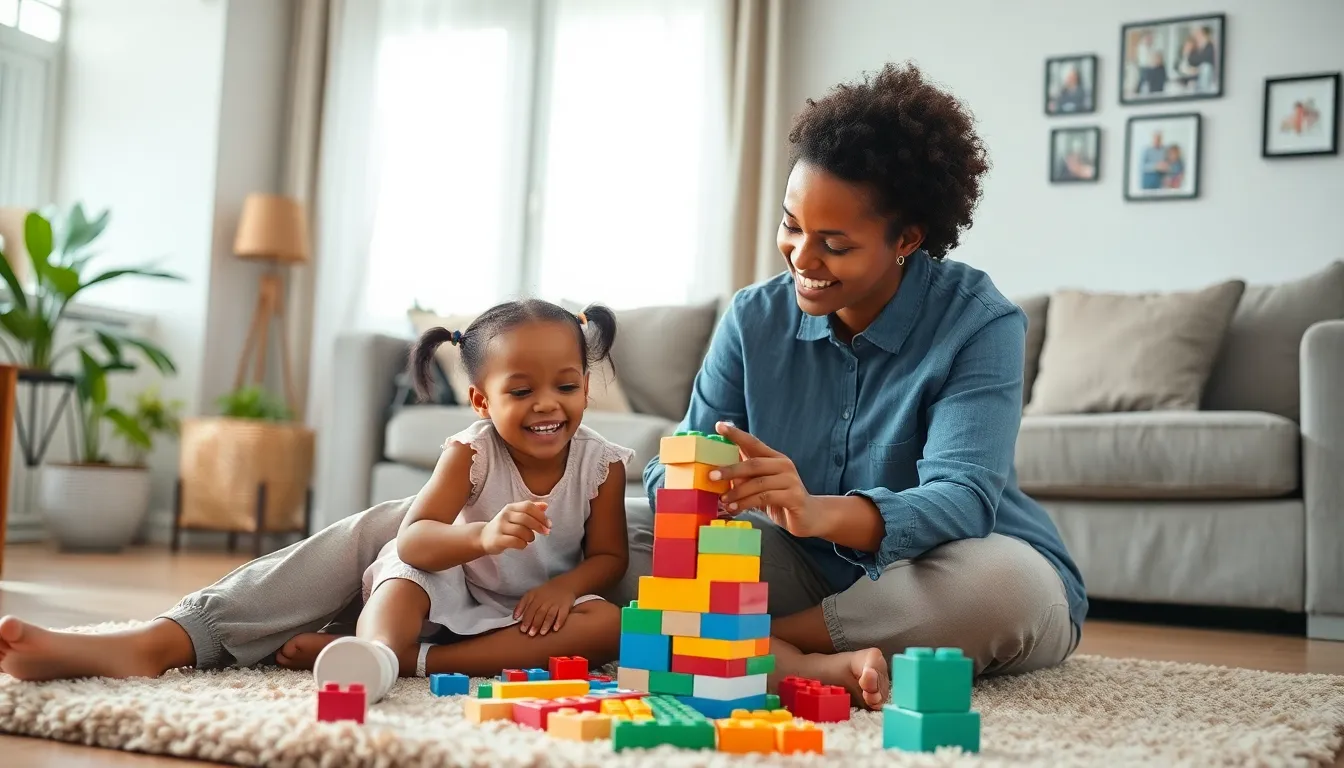Table of Contents
ToggleIn a world where parenting advice often feels like a game of dodgeball, positive parenting styles emerge as the winning strategy. Forget the outdated methods that make you feel like a referee in a chaotic match; it’s time to embrace approaches that foster connection, understanding, and a sprinkle of fun. After all, who knew that raising kids could involve less yelling and more laughter?
Positive parenting isn’t just about discipline; it’s about building a nurturing environment where children thrive. With the right blend of encouragement and guidance, parents can transform their homes into joyful playgrounds of growth. So buckle up and get ready to explore the vibrant world of positive parenting styles, where the only thing more rewarding than a well-behaved child is the peace of mind that comes with it.
Overview Of Positive Parenting Styles
Positive parenting styles focus on creating strong bonds between parents and children. They prioritize mutual respect, empathy, and open communication. This approach benefits both children and parents by fostering a supportive environment where children thrive without fear of harsh discipline.
Supportive styles, like authoritative parenting, encourage children to express their thoughts while also setting appropriate boundaries. Parents using this method are more likely to provide guidance, which helps children navigate challenges confidently. Research indicates that children raised under authoritative conditions often exhibit higher self-esteem and better emotional regulation.
Another effective style, attachment parenting, emphasizes strong emotional connections. Parents engaged in this practice respond sensitively to their children’s needs. Studies show that such responsiveness promotes secure attachment, leading to healthier development outcomes.
Moreover, the nurturing parenting style encourages collaboration and cooperation. Parents focus on teaching problem-solving skills rather than resorting to punishments. Children learn to understand the consequences of their actions instead of operating in fear of repercussions, thus promoting intrinsic motivation.
Positive reinforcement plays a crucial role in these parenting styles. It involves acknowledging and rewarding positive behaviors, which encourages children to repeat them. This method cultivates a positive atmosphere, enhancing children’s self-worth and motivation to engage in responsible behaviors.
Implementing positive parenting styles fosters a nurturing environment that emphasizes development over discipline. These methods not only cultivate well-behaved children but also promote harmony within the family unit. By adopting a positive framework, parents create joyful homes, setting the stage for lifelong healthy relationships and cooperation.
Benefits Of Positive Parenting Styles

Positive parenting styles promote healthier parent-child relationships and foster emotional growth. They create supportive environments where children can thrive.
Emotional Development
Emotional development flourishes through positive parenting. Children learn to recognize and express their feelings, leading to increased emotional intelligence. They develop empathy and resilience by observing parents model healthy emotional responses. Secure attachments formed during early years result in higher self-esteem. Communication skills improve as children feel safe sharing their thoughts and emotions. This nurturing environment helps them cope with stress and navigate social situations more effectively.
Behavioral Impact
Behavioral impact is significantly enhanced under positive parenting methods. Children exhibit improved self-control and decision-making skills when parents encourage autonomy while maintaining structure. Positive reinforcement motivates good behavior and instills a sense of responsibility. They understand the consequences of their actions through discussions rather than punishment. Children’s compliance increases when they feel respected and valued. Cooperative problem-solving skills emerge, preparing them for future challenges. Overall, positive parenting cultivates well-adjusted individuals who engage constructively with their surroundings.
Types Of Positive Parenting Styles
Positive parenting encompasses various approaches that nurture children’s development. Each style has unique characteristics and benefits.
Authoritative Parenting
Authoritative parenting combines firm limits with warmth. Parents express high expectations while providing support, allowing children to voice opinions. This style fosters independence and self-discipline. Research indicates children raised in authoritative households often exhibit higher self-esteem and emotional regulation. They tend to develop meaningful relationships and demonstrate better academic performance. Clear communication is crucial for this parenting style. Establishing rules and consequences fosters a balanced environment that encourages responsibility.
Permissive Parenting
Permissive parenting allows children considerable freedom with few limits. Parents maintain a nurturing and accepting atmosphere, often prioritizing their child’s wishes over rules. This style encourages creativity and self-expression. However, without consistent boundaries, children may struggle with self-discipline. Studies show permissive children might face challenges in adhering to structure in school and social situations. Maintaining open dialogue remains essential, enabling parents to guide children while respecting their individuality.
Uninvolved Parenting
Uninvolved parenting lacks both responsiveness and demands, leading to minimal interaction. Parents provide basic needs but often do not engage emotionally or set expectations. This approach can lead to adverse outcomes in children’s social and emotional development. Research suggests children from uninvolved homes may struggle with self-regulation and attachment issues. Establishing even minimal communication can enhance outcomes, encouraging children to seek connections outside their immediate family. Parents adopting this style benefit from recognizing the importance of involvement in their child’s life.
Strategies For Implementing Positive Parenting Styles
Effective strategies enhance positive parenting styles. Implementing these approaches creates a supportive environment for children.
Effective Communication
Establishing open dialogue fosters trust and understanding. Encourage children to express feelings and thoughts freely. Ask open-ended questions to promote deeper conversations. Listening attentively shows children that their opinions matter. This builds mutual respect and strengthens relationships. Using affirmations validates children’s feelings and experiences. Clear communication reduces misunderstandings. Nonverbal cues, such as eye contact, reinforce messages. Responding empathetically encourages emotional connections. Regular check-ins ensure children feel valued and connected.
Setting Boundaries
Setting clear boundaries provides children with a sense of security. Define expectations to guide children’s behavior effectively. Consistency in enforcement builds trust and comprehension. Explain the reasons behind rules to promote understanding. Allow children some input in creating rules to foster ownership. This approach encourages responsibility and accountability. Flexibility is key when adapting boundaries as children grow. Celebrating achievements reinforces positive behavior. Consequences for breaking rules should be fair and predictable. Together, these strategies promote self-discipline and respect for others.
Embracing positive parenting styles can profoundly impact both children and parents. By fostering strong connections through empathy and open communication, families create nurturing environments that promote emotional growth and resilience.
These approaches not only enhance children’s self-esteem but also equip them with essential life skills. Parents who implement strategies like setting clear boundaries and encouraging dialogue cultivate a sense of responsibility in their children.
Ultimately, positive parenting leads to well-adjusted individuals who navigate the world with confidence and compassion. This journey transforms homes into joyful spaces where both parents and children thrive together.




